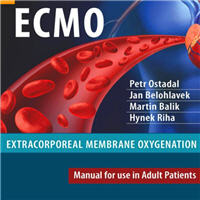Tag: antibiotics
Pseudomonas aeruginosa exoproducts determine antibiotic efficacy against Staphylococcus aureus
Chronic coinfections of Staphylococcus aureus and Pseudomonas aeruginosa frequently fail to respond to antibiotic treatment, leading to significant patient morbidity and mortality. Currently, the impact of interspecies interaction... read more
Prehospital Antibiotics in the Ambulance for Sepsis
Emergency medical services (EMS) personnel have already made substantial contributions to improving care for patients with time-dependent illnesses, such as trauma and myocardial infarction. Patients with sepsis could also... read more
What’s the Effective Antibiotic Dosing in Critically Ill Patients?
Mortality due to severe infections in the intensive care unit (ICU) remains high despite recent therapeutic advancements. It is believed that ICU pathogens are relatively different from those in the general wards as they... read more
Faecal Transplant Effectively Treats Recurrent or Unresponsive Clostridium Difficile
Using a faecal microbiota transplant cured 92% of people with Clostridium difficile that had recurred or had not responded to antibiotics. Faecal transplant also had a lower risk of treatment failure than the antibiotic vancomycin.... read more
Effect of Procalcitonin-guided Antibiotic Treatment on Mortality in Acute Respiratory Infections
Use of procalcitonin to guide antibiotic treatment in patients with acute respiratory infections reduces antibiotic exposure and side-effects, and improves survival. Widespread implementation of procalcitonin protocols in... read more
Effect of Azithromycin on Asthma Exacerbations and Quality of Life in Adults with Persistent Uncontrolled Asthma
Adults with persistent symptomatic asthma experience fewer asthma exacerbations and improved quality of life when treated with oral azithromycin for 48 weeks. Azithromycin might be a useful add-on therapy in persistent asthma.... read more
The Timing of Early Antibiotics and Hospital Mortality in Sepsis
Prior sepsis studies evaluating antibiotic timing have shown mixed results. Objective: To evaluate the association between antibiotic timing and mortality among sepsis patients receiving antibiotics within 6 hours of emergency... read more
Updates on Sepsis from WSC
Fourth session from the World Sepsis Congress Spotlight: Maternal and Neonatal Sepsis - Updates on Sepsis.... read more
When Antibiotic Treatment Fails
What to do when antimicrobial treatment fails and when and how to define it? These are three very common questions arising when clinicians use antibiotics. Categorization of responders and non-responders early in the course... read more
Oral Antibiotics Preferred for Pediatric Pneumonia
Children with complicated pneumonia should be discharged from the hospital with oral instead of intravenous (IV) antibiotics when possible, according to a new study. The results showed no significant differences in treatment... read more
Aerosol Delivery During Invasive Mechanical Ventilation
Lung deposition was lower than 20% of nominal dose delivered with nebulizers and mostly occurred in proximal airways. Further studies are needed to link substantial concentrations of antibiotics in infected pulmonary fluids... read more
Principles of Antimicrobial Stewardship for Bacterial and Fungal Infections in ICU
Selecting antimicrobial therapy for suspected infection in critically ill patients is an important decision-making process for intensivists. In this current age of multi-drug-resistant organisms (MDROs), intensivists must... read more
Sepsis National Hospital Inpatient Quality Measure
The Center for Medicare and Medicaid Services adopted the Early Management Bundle, Severe Sepsis/Septic Shock (SEP-1) performance measure to the Hospital Inpatient Quality Reporting Program in July 2015 to help address the... read more
Antibiotic Prescription Fill Rates Declining
Since 2010, antibiotic prescription rates in the U.S. have been declining among the commercially insured population, falling 9 percent during this period. In this report, the Blue Cross Blue Shield Association, in partnership... read more
Don’t Just Do Something, Stand There!
An excellent analogy on how doing nothing can be the best option. Penalty kicks in soccer can make fans crumple with anguish or weep with elation. The kicker sends the ball rocketing toward the goal and goalkeepers lunge... read more
Antibiotic Guidelines Improve Prescription Practices for Vulnerable Infants
Yale University School of Medicine neonatal intensive care unit (NICU) significantly reduced the number of cases of late-onset sepsis, a leading cause of death among pre-term infants, by implementing guidelines designed to... read more
Delays in Antibiotic Administration for Sepsis
Todd Fraser, MD, speaks with Christopher W. Seymour, MD, MSc, about the article, "Delays From First Medical Contact to Antibiotic Administration for Sepsis," published in Critical Care Medicine. Dr. Seymour's article contends... read more
Better Detection & Response to Outbreaks with Enhanced Data
Established in 2016, CDC’s Antibiotic Resistance Laboratory Network (AR Lab Network) supports nationwide lab capacity to rapidly detect antibiotic resistance in healthcare, food, and the community, and inform local responses... read more
Clinical Impact of COPD on Non-cystic Fibrosis Bronchiectasis
Clinical impact of chronic obstructive pulmonary disease on non-cystic fibrosis bronchiectasis. A study on 1,790 patients from the Spanish Bronchiectasis Historical Registry. Patients with BE related to COPD have the same... read more
Antibiotic Therapy in Comatose Mechanically Ventilated Patients Following Aspiration
Among comatose patients receiving mechanical ventilation, those without clinical, laboratory, or radiologic evidence of bacterial aspiration pneumonia did not require antibiotics. In those with suspected bacterial aspiration... read more
Update: Implementation of Antibiotic Stewardship Core Elements
This document provides guidance on practical strategies to implement antibiotic stewardship programs in small and critical access hospitals. It was developed as a collaboration between The Centers for Disease Control and... read more
How to Remove the Grey Area Between VAP and VAT?
We read with great interest the study performed by Paula Ramirez and colleagues. The study included 71 patients with ventilator-associated pneumonia (VAP) and the authors coined a new term called "gradual VAP".... read more









